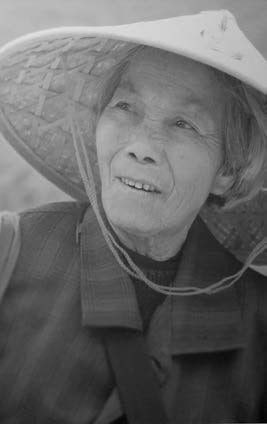CULTURE SPY - HYPERREALISM

Paul Cadden is a leading light within the artistic genre of hyperrealism. Born out of photorealism — a U.S. movement, which sought to convey a real life “American dream” with minute finesse — hyperrealism has carved its own individuality in both style and substance. Using photographs primarily as reference — and undeniably mind-blowing in its “photo-like” portrayal — hyperrealism is mainly applied to the independent art style that developed in the early 2000s depicting realistic, contemporary subject matters. “Hyperreal paintings and sculptures are not strict interpretations of photographs, nor are they literal illustrations of a particular scene or subject,” explains Cadden. “Instead, they utilize additional, often subtle, pictorial elements to create the illusion of a reality, which in fact either does not exist or cannot be seen by the human eye.”
Represented by three distinct genres — landscape/urban landscape, portraiture/ human figure, and still life — hyperrealists are appreciated for the narrative elements that they weave into their works, incorporating “emotional, social, cultural and political thematic elements as an extension of the painted visual illusion,” says Cadden. But an additional important differentiating
factor is how contemporary the subjects are, explains Maggie Bollaert of London’s Plus One
Gallery. “An old-fashioned still life is not what hyperrealism is about, that would be copy-ism;
the subject matter and themes need to be modern,” she says.
The colorful, pop art-like work of still life artists Pedro Campos and Javier Banegas beautifully illustrate the contemporary element that Bollaert refers to. Campos’ jars of brightly colored jelly beans have an alluring yet mundane appeal, while his large-scale depictions of Coca Cola and
Campbell’s Soup cans bear a likeness to the iconic work of Andy Warhol. Similarly, Banegas’ close-up still life depictions of pencil shavings or paint pots left without lids have an element of inertia about them, and yet give the impression of human interaction; used objects that denote a
passing of time.
Championing the movement for the past 18 years, Plus One Gallery represents hyperrealist
artists the world over, from still-life experts Pedro Campos and Javier Banegas to urban landscapers Andres Castellanos and Christian Marsh to portraiture artists Paul Cadden and Simon Hennessey.
Hennessey takes an almost forensic approach to constructing his paintings. By enlarging photographs to the point where images begin to pixelate, he then begins adding or removing
detail, altering depth, adding textures, form and color values and their relationship within the painting. “The notable thing that paintings have over photography is the rich build-up of pigments over a surface and artists should use this to their advantage,” he says. “I want
my artwork to show my artistic input and my thought process.” By blurring the boundaries between what is real and what is made up, Hennessey presents the viewer with “a simulation of reality.”
A similar approach is the calling card of urban landscape painter Christian Marsh, best known for his sprawling cityscapes of major destinations around the world. He uses photography to document compositional features, lighting and moving objects at a given time, taking numerous images at the same location so that he can add or remove elements at will. This enables Marsh to create a composite view that reinvents his photographs into a scene that never existed.
The evident surge in appeal that hyperrealism is experiencing at present is attributed, in part, to the developments made in camera technology and digital equipment, which offers artists more precision. “I feel the evolvement and accessibility of digital highdefinition photography and editing software is one of the reasons hyperrealism has gained popularity in recent years,” says Hennessey. This high-fidelity realism also is masterfully captured in sculptural work too, such as that of Australian-born, London-based Ron Mueck. Using resin, fiberglass, silicone and many other materials, Mueck constructs hyperrealistic likenesses of human beings, including human hair, while playing with scale.
However, it’s also the genre’s ability to represent a relatable zeitgeist that captures our imagination. For Kit King, distorting people’s perception of reality and “undressing
the cultural layers that determine worth and shape identity within the social stratum” define her work. Her innovative use of traditional materials pushes boundaries, often with a destructive nature that emulates the destructive nature of man. The need to create beckons the need to destroy, as is visible in King’s most recent works of fully rendered paintings that have been cut up into pieces, deconstructed and reassembled.
Unlike most hyperrealists who work in small squares, section-by-section, King works in layers, covering the entirety of her large-scale surface. “Working large allows me to dance with the paint,” she says. “The larger the surface, the freer my movements can be, and the more I can feel each brush stroke as I push the paint across the surface; free to feel the piece come to life.”
Read Next
Navigator Newsletter Stay informed on all things yachting and luxury lifestyle with the bi-monthly Navigator newsletters.
